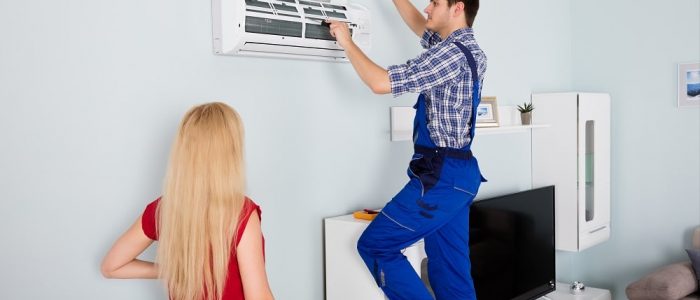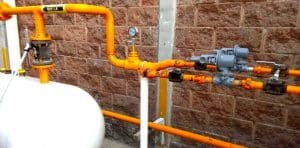Do you want to learn how to install an air conditioner so that you can do it yourself? What steps should you follow to get your refrigeration equipment to work properly? Is it possible to install an air conditioning unit without resorting to a professional?
If you have experience with electrical installations then installing an air conditioner will be very easy for you. Although each manufacturer provides installation instructions for their appliances, below we bring you the general steps so that you can install your own air conditioning unit for yourself.
Install the indoor unit
Choose the optimal location for your air conditioning unit
The requirements of this space for your air conditioner to work properly should be the following:
- Avoid places where the sun hits directly or where there may be sources of heat. Also, do not install the unit in places where oil or sulfur gas may leak.
- Make sure to leave the necessary space around the air conditioner. It is desirable that there is a space of approximately 20 centimeters from the top and sides, and a minimum of 2 meters from the ground.
- Do not place your air conditioning device too close to other connections or systems, such as television antennas, security systems or telephones.
- Select a thick, sturdy wall that will support the weight of the appliance. Sometimes it is advisable to use a metal frame or structure to reinforce its support.
Start mounting the structure on the wall
You simply have to install the panel on which you will place your air conditioning unit. The steps to get it right are simple. Just make sure that it is horizontally level and make the appropriate holes to fix it to the wall. Once you have inserted the necessary anchors, you can fix the plate to the wall with screws.
Drill a hole in the wall so the air conditioner tube can go through the wall
It is time to make the hole that connects your indoor unit with the condenser that you will place on the outside of the wall. Take into account the length of the tube and the distance between the indoor unit and the outdoor condenser.
Most of the time, a hole of about 8 centimeters in diameter will suffice. Don't forget to give it some downward orientation so your new air conditioner can drain properly.
Check that everything is correct
Check that all cables are well connected. For this you can use the documentation that comes with your device.
Complete the rest of the connections
Pass the tube through the hole in the wall keeping it as straight as possible. Then tie the copper tubes, power cables, and drain tube tightly together. To do this, you can use electrical tape. The most important thing about this step is that the water can flow easily.
The drain pipe must be attached to the base of the indoor unit. Likewise, it is important that a free flow of water is maintained.
Install the external capacitor
It is essential that when choosing the location of the condenser you do it in a lonely area and as less dusty and hot as possible. Leave about 40 cm of margin so that everything works as it should.
Place the bracket on which the condenser will be held. Depending on the architectural features, you can place it on the wall or on the floor on a pad.
In any case, your priority here is to minimize vibration and keep the device away from radio or television antennas (at least 4 meters away).
Fix everything well and… ready!
Finish with the last details of your installation
For your air conditioner to work properly and last for a long time, the first thing you have to do is purge the air and humidity from the circuit. To do this, remove the valve caps and use the vacuum pump hose.
Turn on the device and make it reach an absolute vacuum of 10 mm Hg. After that, turn off and unplug the unit or replace the service port and caps.
You can secure the pipe joints with some electrical tape and cable ties. Finally, seal the hole with some expanding polyurethane foam to prevent leaks.


